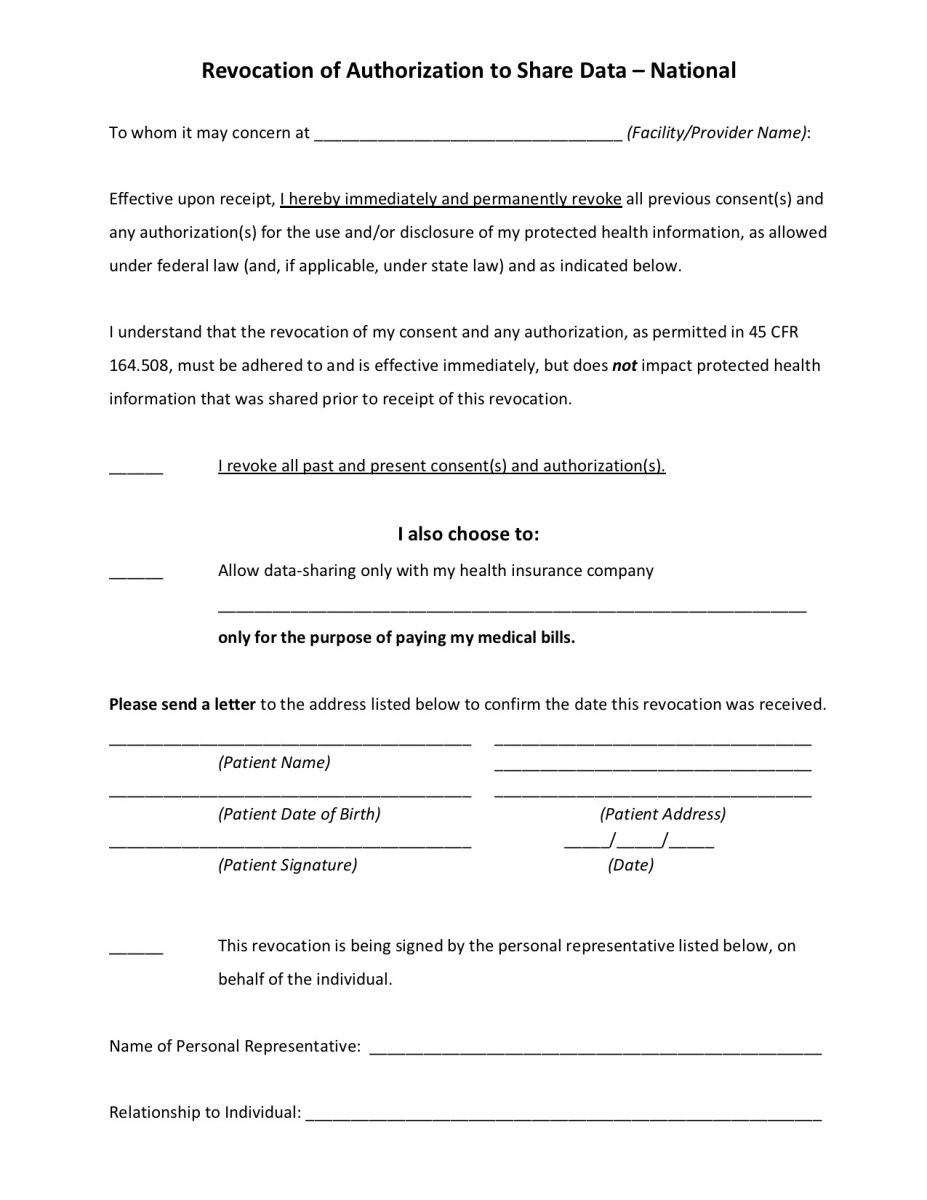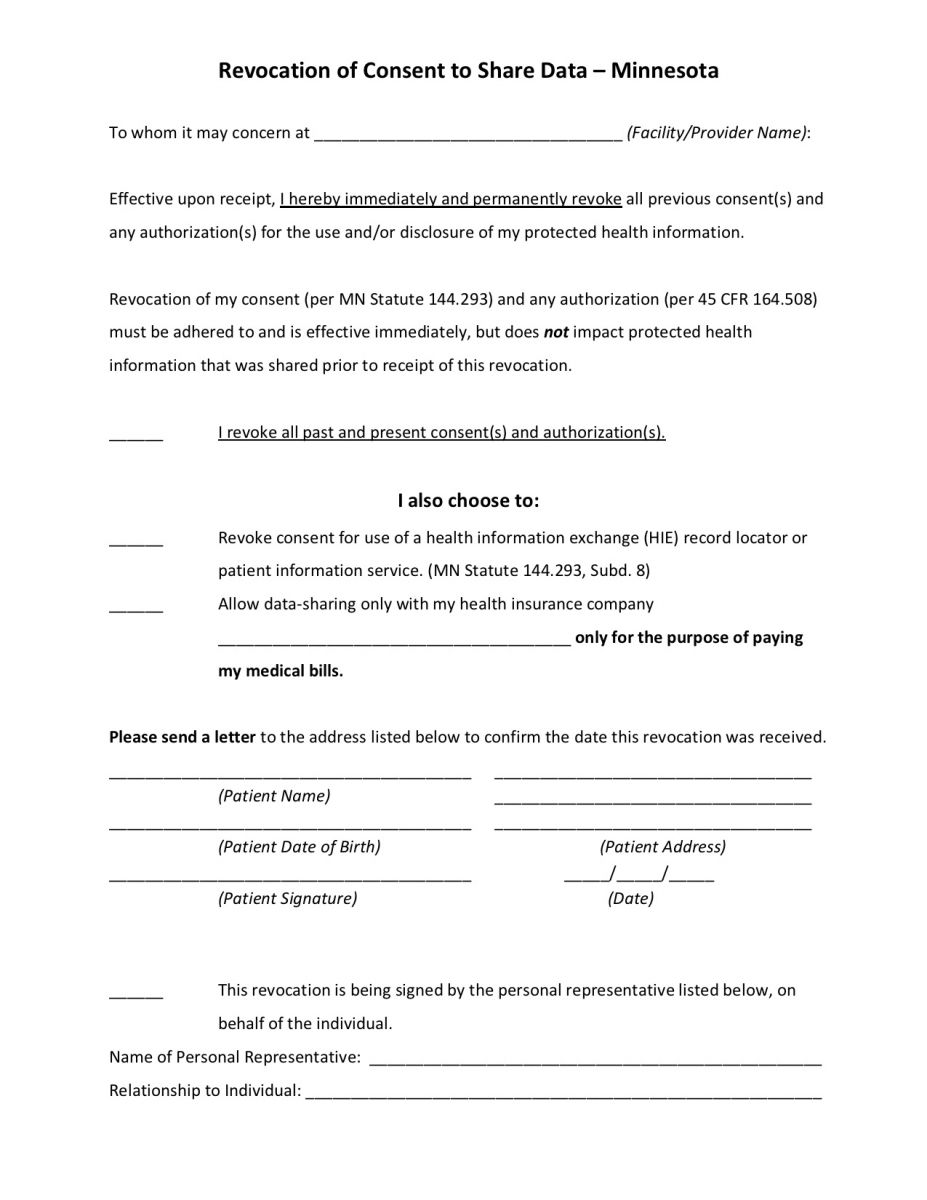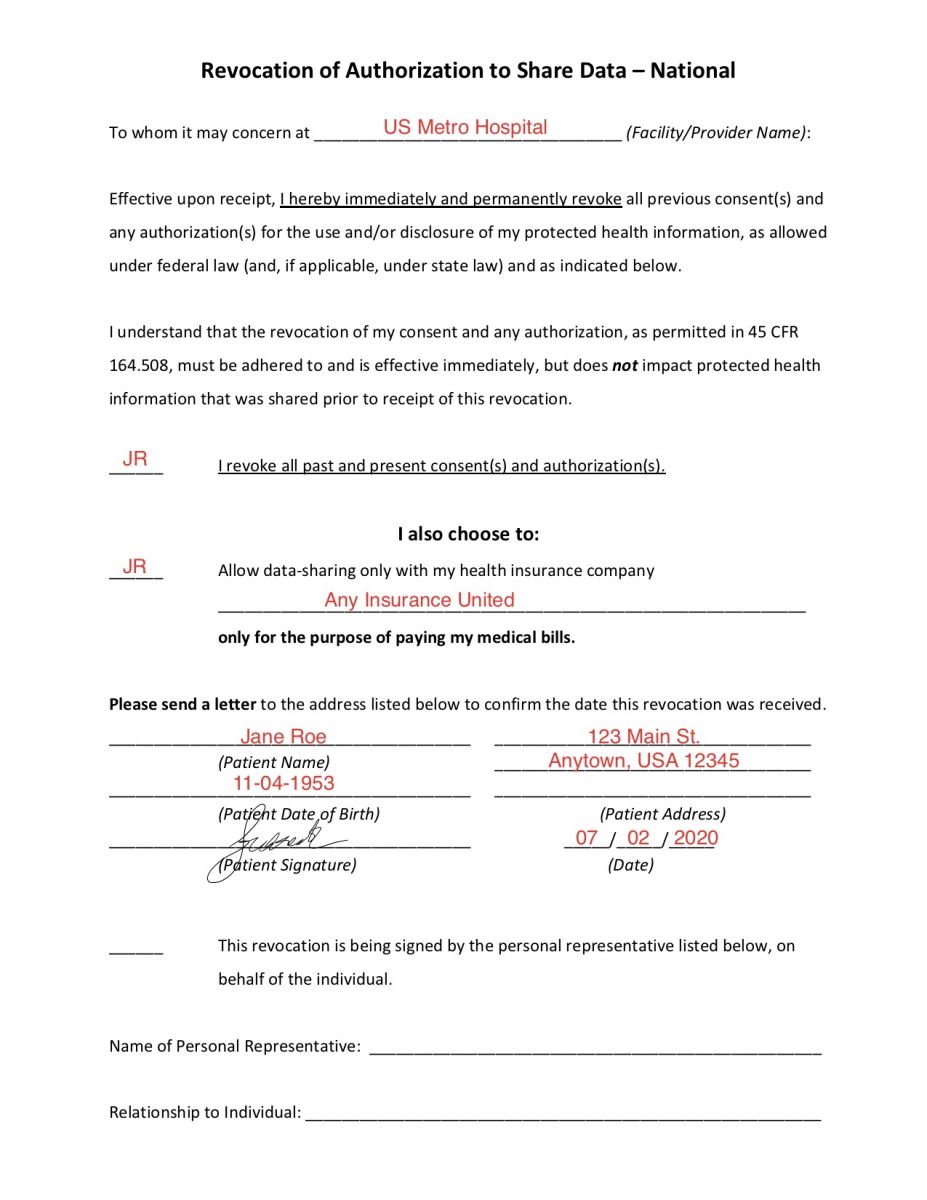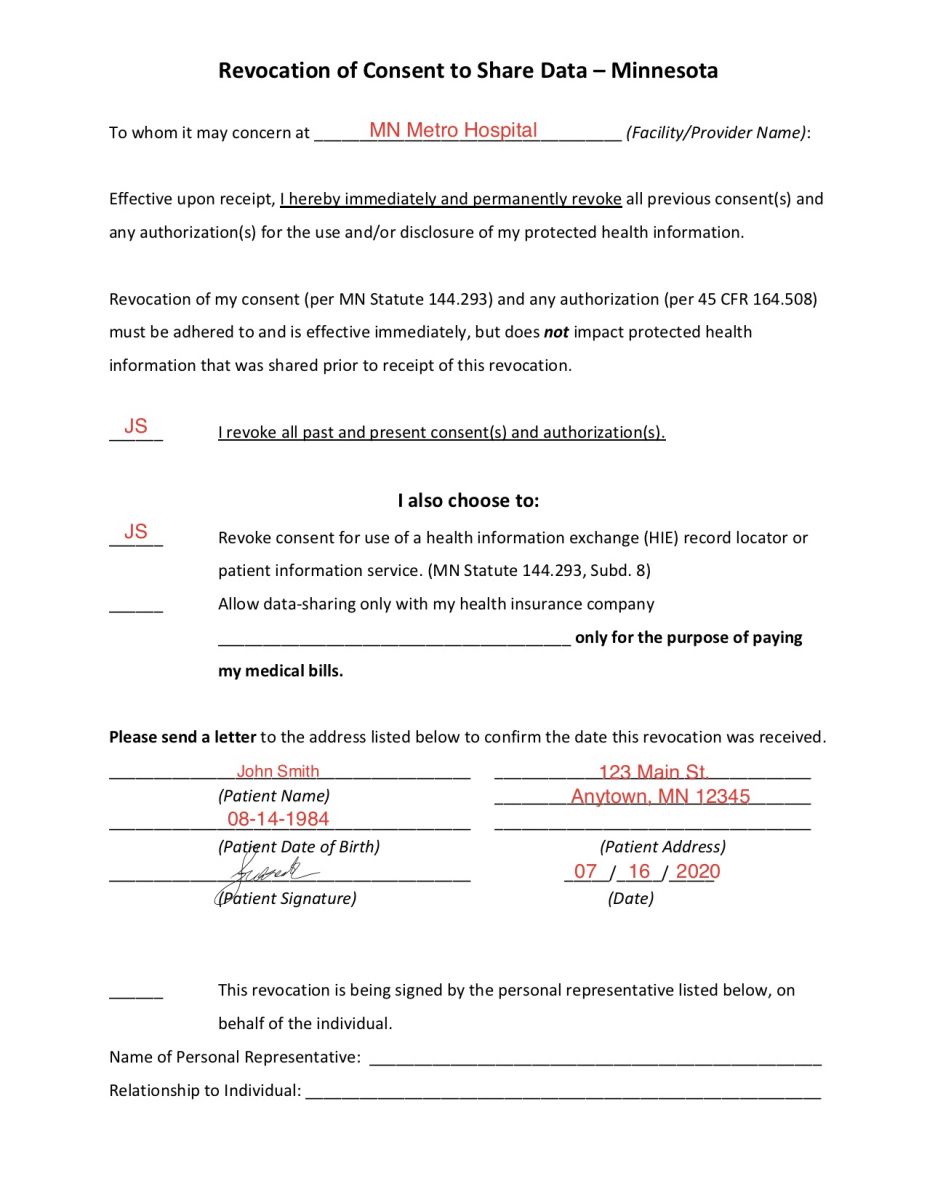Revoking Your Consent
What To Do When Coerced or Required
to Sign a Consent or Authorization Form for Data Sharing
Patients are often coerced or required to sign a consent form they do not agree with -- simply to receive treatment. In other words, patients are often forced to choose between protecting their private information or receiving medical care.
These are not mutually exclusive activities. However, health care facilities often bundle multiple provisions into a single consent form -- such as:
- consent for treatment
- consent for billing
- consent for research
- consent for data-sharing
- and more
These "single signature" consent forms do not allow patients to maintain control over their health information. For example, Essentia Health's consent form contains 23 separate items. As a result, you, as a patient, may need to get creative to protect your information. (Check out the Consent Form page to learn First Steps for protecting your information.)
Second Step - If you are unable to amend the consent form to deny certain data-sharing, and you are unable or do not wish to seek medical care elsewhere, there is another option -- revoking your consent. See below.
National Revocation Form | Minnesota Revocation Form:
Important Notes:
- Revoking consent does not impact data that has already been shared. Thus, it is important to revoke your consent as quickly as possible.
- The federal HIPAA rule allows an individual to revoke authorization at any time, and it must be adhered to immediately upon receipt. (HHS Explanation of Revoking Authorization)
- Minnesota's strong privacy law is unique and allows consent revocation at any time.
How to Fill Out the Forms:
The National and Minnesota Revocation Forms are nearly identical. Simply write the name of the health care facility at the top, initial to indicate the items you desire, fill out the patient information section, and sign the form.
Additional Notes:
1. If you want to use your insurance company to pay for your medical care, be sure to initial the section and list the insurer as indicated in Sample 1.
2. If you want to pay cash, check, or credit and do not wish your insurer to access your medical record, leave the insurance section blank and do not inital as indicated in Sample 2.
3. If you are in Minnesota and wish to opt-out of the state health information exchange (HIE), initial as indicated in Sample 2.
4. If you are the patient's representative, complete the bottom section. (ex. Mother, Father, or Guardian signing for a minor child)
National Revocation Form | Minnesota Revocation Form:
SAMPLE 1 SAMPLE 2
Two Examples of How the Forms Can Be Used:
Immediate Revocation:
A woman in severe pain visits a clinic or hospital, and receives a consent form that contains a number of health information sharing requirements she is not comfortable with. After speaking with the receptionist and the manager about only wishing to sign a consent form to be treated and to allow sharing of information with the insurance company to pay for the visit, the woman is told she will not be seen unless she signs and agrees to everything in the bundled consent form. Because she is in severe pain, the woman acquiesces and signs the form and receives her much needed medical care.
However, as she leaves, she hands the receptionist a copy of the Revocation Form, which she filled out while waiting to see the doctor. This allows her to immediately be seen and receive medical treatment. It also quickly stops the unwanted data sharing she previously authorized with the coercive consent form.
After-the-Fact Revocation:
A man went to the hospital and was admitted for treatment. After he recovered, he reviewed his paperwork and found a copy of his consent form. For the first time, he actually read the entire document and realized how much of his private personal and medical information he "agreed" to share.
Uncomfortable with how his data could be shared, he filled out a consent revocation form and sent it to the hospital. This stopped his health information from continuing to be shared by the bundled consent form he previously signed.









